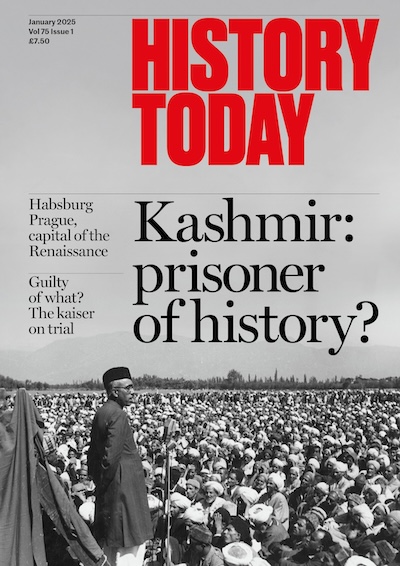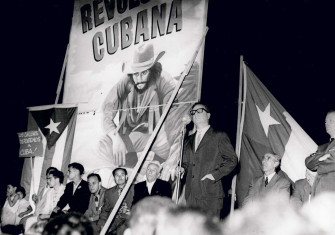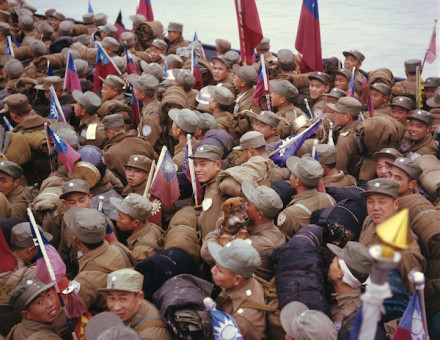‘Patria’ by Laurence Blair review
In Patria: Lost Countries of South America, Laurence Blair explores nine nations, dissolved or imagined, and what they tell us about Latin America.

Aside from the Falklands War, and perhaps the Spanish conquest, Brits, in general, know very little about the history of South America. It’s an oversight that persists despite the continent’s influence on Britain, from guano – the bird dung fertiliser that powered the late industrial revolution – to the potato in fish and chips or roast dinners. The United Kingdom itself was formed after Scotland’s botched scheme to establish a colony in the Darién Gap. In Patria: Lost Countries of South America, Laurence Blair makes the case for the region. Blair, a British journalist living in Paraguay, tells the stories of nine South American ‘nations’ that either broke up, no longer exist or were merely imagined. Part history, part journalism (and part treatise for a better world), it’s a distinctive and original account of an under-appreciated continent.
Nations, and sophisticated ones at that, existed in South America well before the Spanish and Portuguese conquests. And not just in the Andes of the Inca empire, but in one of the most remote and important places on Earth: the Amazon. The rainforest – which Europeans and South American creoles typically regarded as barbarous – sustained millions of people in highly organised societies. By around 6,000 BC indigenous groups were domesticating plant species such as sweet potato, Brazil nuts, peppers and a multitude of fruits. These communities ‘shaped the forest around them into a rolling orchard, plantation and apothecary to live sustainably for millennia’. Alongside the Fertile Crescent and the Yangtze basin, the Amazon, Blair concludes, was one of the first centres in the development of agriculture.
Jungle states flourished despite the arrival of European conquerors, and sometimes in defiance of them. Blair describes the remarkable case of Palmares, founded around 1600 by formerly enslaved Africans who had escaped the Portuguese. Collaborating with indigenous societies, they settled in Brazil’s Atlantic rainforest. At their peak, 70 years later, the Palmarian people were ‘spread across ten fortified towns and countless outlying farmsteads’, and their population was three times greater than that of Rio de Janeiro.
Indigenous peoples showed similar resistance. The Diaguita – a confederation located in the Andes of northeastern Chile and northwestern Argentina – remained independent from Spain for 130 years. Such was the Diaguita’s strength that some Spaniards feared for the longevity of their South American domains. For Blair, the case of the Diaguita rebuts the view of ‘Indigenous resistance melting away before European guns, germs and steel’.
The nation that most recurs across the book is one that was much-imagined, but never realised: a union of Spain’s former colonies. This nation, which would have stretched from the Caribbean to Tierra del Fuego, was intended to have the size and geopolitical importance to repel European and North American intrigue. It was the dream of many Liberators, including Simón Bolívar and José de San Martín. Manuel Belgrano, the Argentinian statesman and general, proposed in 1816 that the new republics unite to restore the Inca empire. When Belgrano designed the Argentinian flag, he included the insignia of the Inca sun – a statement of transcontinental identity repeated by Uruguay.
Despite its august and charismatic promoters, the dream of a continent-sized nation remained a fantasy. Rather than unite, the territories that succeeded the Spanish viceroyalties of New Granada, Peru and La Plata divided further. The abstract notion of a South American mega-state succumbed to competing political ideals, regional interests and the difficulties of nation-building amid vast mountains, jungles and deserts.
Blair uses his nine case studies as launchpads for reportage and, occasionally, essay. Each provides evidence for his arguments in favour of environmental conservation and racial integration. Many of the histories he tells are very little known (even by South Americans) and some have been wilfully suppressed.
One such example is the prevailing myth of a historically white Argentina. In 2021 the left-leaning president Alberto Fernández remarked: ‘Mexicans originated from Indians, Brazilians from the jungle, but we Argentinians arrived on boats – and they were boats that came from Europe.’ As Blair shows, this is inaccurate. Not only are Argentinians descended from indigenous groups such as the Diaguita, but Argentina also has a deep African heritage. At the start of the 19th century Africans and their descendants constituted a third of Buenos Aires’ population. Afro-Argentinians were decisive in the campaign for independence – not just as soldiers, but as trusted figures in San Martín’s inner circle. As Argentina’s most prominent national hero wrote: ‘One day it will be known that the fatherland was freed by the poor and their children, by our Indians and blacks.’
Patria’s focus is on sub-equatorial South America and, as Blair laments in his commendably substantial acknowledgements, the book includes little material from Ecuador, Colombia, Venezuela, Guyana, Suriname or French Guiana. Venezuela, in particular, could have been a particularly interesting addition, given the country’s heavily politicised history. In a 2023 referendum, Venezuelans voted in favour of military annexation of more than two-thirds of neighbouring Guyana, which Venezuela lost in the 19th century due to the arrival of British settlers and cartographers.
Regardless, Patria is a feat of historical detail. Blair is an excellent guide with a knack for analogy. Machu Picchu, for example, is described as a ‘summer residence similar in function and age to Hampton Court Palace’.
South America has shaped global history for half a millennium, and is critical to humanity’s future: it is home to both the Amazon rainforest and the metals necessary for the transition to cleaner energy. Patria shows why we should take the region seriously.
-
Patria: Lost Countries of South America
Laurence Blair
Bodley Head, 448pp, £25
Buy from bookshop.org (affiliate link)
Daniel Rey is a writer based in New York.






